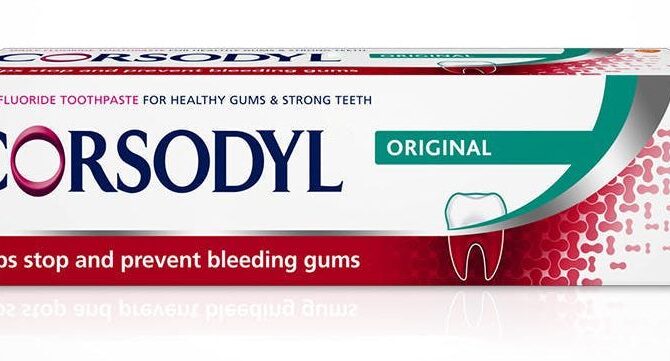
Protect Yourself from Gum Disease with Best Toothpaste For Gum Disease Having Active Ingredient Toothpaste Options
What is Gum Disease?
Gum disease, also known as periodontal disease, is an infection of the tissues that surround and support the teeth. It can cause swelling, tenderness, and bleeding in the gums. Left untreated, gum disease can destroy the tissues that hold the teeth in place, leading to tooth loss. Gum disease can be caused by a number of factors, including poor oral hygiene, smoking, hormonal changes, genetic predisposition, diabetes, and certain medications. Plaque, a sticky film composed of bacteria, forms on the teeth near the gum line. If not removed, the plaque can cause irritation to the gums and can lead to gum disease.
Why is it Important to Use the Right Toothpaste for Gum Disease?
Toothpaste plays an essential role in maintaining good oral health. The right toothpaste can help to reduce the risk of developing gum disease, as well as preventing further progression of the condition. There are several different types of toothpaste that are specifically designed to target gum disease, and choosing the right one can help to reduce plaque and maintain healthy gums. For people with existing gum disease, choosing the right toothpaste is particularly important. Specific ingredients found in some toothpastes can help reduce inflammation and help reduce the buildup of bacteria which can lead to gum disease. Additionally, fluoride toothpaste can help strengthen the enamel and reduce the risk of cavities.
Types of Toothpaste
When it comes to toothpaste, there are many different types available. Each type caters to a specific need, whether it be to whiten, reduce sensitivity, or reduce tartar build-up.
Whitening Toothpaste
Whitening toothpastes are designed to remove surface stains from the teeth. Those with mild discoloration will see the most benefit especially when used in combination with whitening mouthwashes. It is important to note that whitening toothpaste will not change the natural colour of your teeth.
Sensitive Toothpaste
Those with sensitive teeth may benefit from using specialist toothpaste. This type of toothpaste works by blocking pain signals from the nerve endings in the gums. They often contain compounds such as potassium nitrate and strontium chloride which help to reduce pain and desensitize the tooth.
Tartar Control Toothpaste
Tartar control toothpaste contains ingredients specifically designed to prevent plaque from hardening into tartar. This type of toothpaste helps to reduce existing tartar build-up and can also help to prevent future build-up. Usually, these toothpastes contain sodium pyrophosphate and zinc citrate, both of which have anti-tartar properties.
Overview of Why the Best Toothpaste for Gum Disease Is Important
When it comes to choosing the toothpaste that is the best for preventing and treating gum disease, the importance of using the right product cannot be overstated. Gum disease is a serious infection caused by bacteria that can cause pain, swelling, and in extreme cases, even tooth loss. It can be prevented from progressing with proper oral hygiene and the use of the right type of toothpaste.
Using the wrong type of toothpaste may not help in controlling the progression of gum disease, so it’s important to understand which types are best for people with gum disease. The right type of toothpaste can help reduce inflammation, cleanse the teeth and gums, and remove plaque build-up that can irritate and inflame the gums.
The active ingredients found in the best toothpastes for gum disease help to fight off bacterial infection while reducing inflammation and cleaning away debris in the mouth that can lead to further infection. It’s important to choose the right type of toothpaste as well as the right brushing techniques to get the best results when it comes to controlling gum disease.
Specific types of toothpaste, such as those that contain triclosan, can help to reduce inflammation and reduce the amount of plaque and bacteria in the mouth. However, it’s important to understand the risks associated with using certain types of toothpastes, as well as which ones are most effective for people with gum disease.
Research-Based Facts about the Active Ingredients for Fighting Gum Disease
Gum disease is a major concern for many people. It can cause serious discomfort and even tooth loss if it is not treated properly. Fortunately, modern science has enabled us to develop toothpastes that contain active ingredients that help to fight gum disease.
These active ingredients typically fall into three categories: antimicrobials, surfactants, and emollients. Each of these products has different benefits and uses in fighting gum disease, and it’s important to know how to use them effectively.
Antimicrobials destroy harmful bacteria. They are effective at removing plaque and preventing gum disease from getting worse. Surfactants help to remove debris, while emollients help to soften hard tissue in the gums and make them easier to clean.
It is also important to distinguish between generic dental products and products specifically designed for targeting gum disease. Generic dental products may offer attractive price points, but come with risks, such as increased sensitivity or a lack of effectiveness.

Pros and Cons of Different Types of Toothpaste for People with Gum Disease
When it comes to choosing a toothpaste for gum disease, there are many factors to consider. Different types of toothpaste can have different effects on the mouth, so it is important to understand the pros and cons of each type before making a decision.
Antimicrobial Toothpastes
Antimicrobial toothpastes contain ingredients such as triclosan or alcohol that can help to reduce bacteria in the mouth. This can help to avoid gum disease and other infections. However, these ingredients can also be too harsh for some people, causing burning or irritation of the gums or throat.
Surfactant Toothpastes
Surfactant toothpastes contain substances like sodium lauryl sulfate, which works to break down plaque. They can be effective in reducing bacteria and plaque buildup, however, they can also leave the mouth feeling dry or irritating if used too often. Additionally, they may not be as effective as antimicrobial toothpastes in treating gum disease.
Emollient Toothpastes
Emollient toothpastes contain ingredients such as glycerin which can help to soothe and protect the gums. These can be helpful in reducing inflammation and soreness, but they may not be as effective as other types of toothpaste in fighting bacteria and plaque. Additionally, emollient toothpastes can be more expensive than other types.
Understanding the pros and cons of different types of toothpaste for people with gum disease can help you make an informed decision about what is best for your individual needs. It is important to speak to your dentist or hygienist for further advice on how to keep your gums healthy.
Choosing the Right Toothpaste for Your Needs
When it comes to choosing the best toothpaste for gum disease, it’s important to take into account your individual needs.Finding the right product requires some research, as well as understanding what is available on the market. There are different types of toothpastes that may be more suitable for certain conditions.
For example, if you have sensitive teeth or suffer from surface staining then you may need to use a specialized toothpaste that is specifically designed for these issues. Similarly, if you have signs of gum disease, such as bleeding gums and receding gums, then you should look for a toothpaste that contains active ingredients specifically designed to target these problems.
The following list outlines the various types of toothpastes on the market and what they can be used for:
- Whitening toothpaste – helps to restore whiteness to teeth and remove surface stains.
- Sensitive toothpaste – contains active ingredients such as strontium chloride or potassium nitrate to help relieve discomfort in the teeth.
- Tartar control toothpaste – formulated to help prevent plaque build-up.
- Antimicrobial toothpaste – designed to target bacteria and reduce the risk of gum disease.
- Surfactant toothpaste – helps reduce the amount of plaque and tartar on the teeth.
- Emollient toothpaste – helps to lubricate the gums and soothe inflammation.
By taking the time to understand the different types of toothpastes available and what they are designed for, you will be able to make an informed decision about which is most suitable for your individual needs.

Recommended Brands for Gum Disease
When it comes to finding the right toothpaste to fight gum disease, it’s important to consider all the different brands available. Many toothpastes contain active ingredients that can help reduce the symptoms of gum disease, but some are specifically designed to target and fight it.
Here are just a few of the brands that have been recommended for fighting gum disease:
- Crest Pro-Health Advanced: This toothpaste includes stannous fluoride, an ingredient proven to fight the bacteria that cause gum disease.
- Colgate Total: This toothpaste contains triclosan, an antibacterial agent that helps to fight germs and reduce inflammation from gum disease.
- Sensodyne Pronamel: This toothpaste contains potassium nitrate, which helps to block pain signals associated with gum disease.
If you’re unsure about which toothpaste is best for your individual needs, it’s always best to consult a dentist or other dental professional. They can provide the most up-to-date advice on which toothpaste will work best for you.
Risks of Using Generic Dental Products
You may be tempted to buy generic brands of toothpaste, mouthwashes, or other dental products due to the attractive price point. However, it is important to understand that using generic dental products comes with certain risks.
Generic dental products contain unknown ingredients and components that can be potentially irritating to the gums and teeth. Moreover, they may not contain the active ingredients that are specifically designed to target and reduce gum disease.
Some of the common risks associated with using generic dental products include:
- Increased risk of irritation and dryness in the mouth
- Risk of gum disease progression if active ingredients are not present
- Thinning of enamel over time due to aggressive ingredients
- Lack of fluoride, which can lead to tooth decay
When it comes to selecting the best toothpaste for gum disease, always choose products that contain active ingredients that fight against bacteria in the mouth. In addition, make sure to select toothpaste that has fluoride, as this is an important ingredient for preventive care.
Understanding the Differences Between Antimicrobial, Surfactant and Emollient Toothpastes
When it comes to fighting gum disease, understanding the difference between antimicrobial, surfactant and emollient toothpastes can be crucial in ensuring you are using the right type of toothpaste for your own personal needs.
Antimicrobial toothpastes are designed to target and reduce the bacterial build-up in the mouth that can lead to gum disease. They contain active ingredients that help to fight the bacteria and keep the plaque and tartar content under control.
Surfactant toothpastes are used for their cleansing properties, which help to reduce surface staining caused by food and drinks. These toothpastes often contain additional ingredients such as baking soda, which help to remove stains from teeth and create a brighter smile.
Emollient toothpastes are gentle on sensitive gums and help to soothe and protect tissue from further abrasions and damage. These toothpastes also help to reduce inflammation and promote healing, making them particularly helpful for those with gum disease.
Conclusion: The Best Toothpaste for Gum Disease
Gum disease is an increasingly common health threat. It is important to take all necessary steps to protect yourself from it. One of the foremost things you can do is to use the right type of toothpaste. Research-based facts, figures and evidence suggest that using the right type can help prevent further progression of the gum disease.
The best toothpaste for gum disease should be an antiseptic and antimicrobial option, free of surfactants and containing the right amount of emollients. It should also be formulated specifically to target gum disease. There are a range of brands on the market specifically designed for this purpose.
Using the wrong type of toothpaste, such as generic dental products, can pose risks to your oral health and increase your chances of developing gum disease. It is also important to visit a dentist regularly to receive professional advice.
By taking the right steps and using the right type of toothpaste, you can reduce your chances of developing or furthering gum disease. Utilizing the information and research-based facts presented in this guide, you can find the best toothpaste for your individual needs and take the necessary steps to maintain good oral health.
Summary of the Key Points
In this guide, we have discussed the importance of choosing the best toothpaste for gum disease. We summarized different types of toothpastes available and highlighted which active ingredients are beneficial for fighting gum disease. We also provided a comparison of pros and cons between different types of toothpaste, to help you make an informed decision on which toothpaste is most suitable for you.
Furthermore, we outlined the importance of selecting brands that have been designed specifically for targeting gum disease, along with associated risks of using generic dental products.
It is recommended to use toothpaste with antimicrobial, surfactant and emollient properties in order to reduce the chances of further progression of gum disease. The guide also emphasizes the importance of visiting a dentist regularly to receive professional advice.
Visit the Dentist
It is important for people with gum disease to visit their dentist regularly to receive professional dental advice. Regular dental check-ups can help to detect the earliest signs of gum disease and can prevent it from worsening, thereby reducing the risk of further health complications.
A dentist or periodontist can provide advice on how to take care of your teeth and gums at home, and they will also provide preventive treatments such as scaling and root planing to remove tartar and bacteria buildup. Your dentist or periodontist may also recommend additional treatments such as gingival flap surgery or regenerative procedures to repair tissues damaged by periodontal disease.
Regular visits to your dentist should be part of your overall oral hygiene routine; even if you are not suffering from any symptoms of gum disease, it is essential to have regular check-ups to monitor your oral health.
Leave a reply